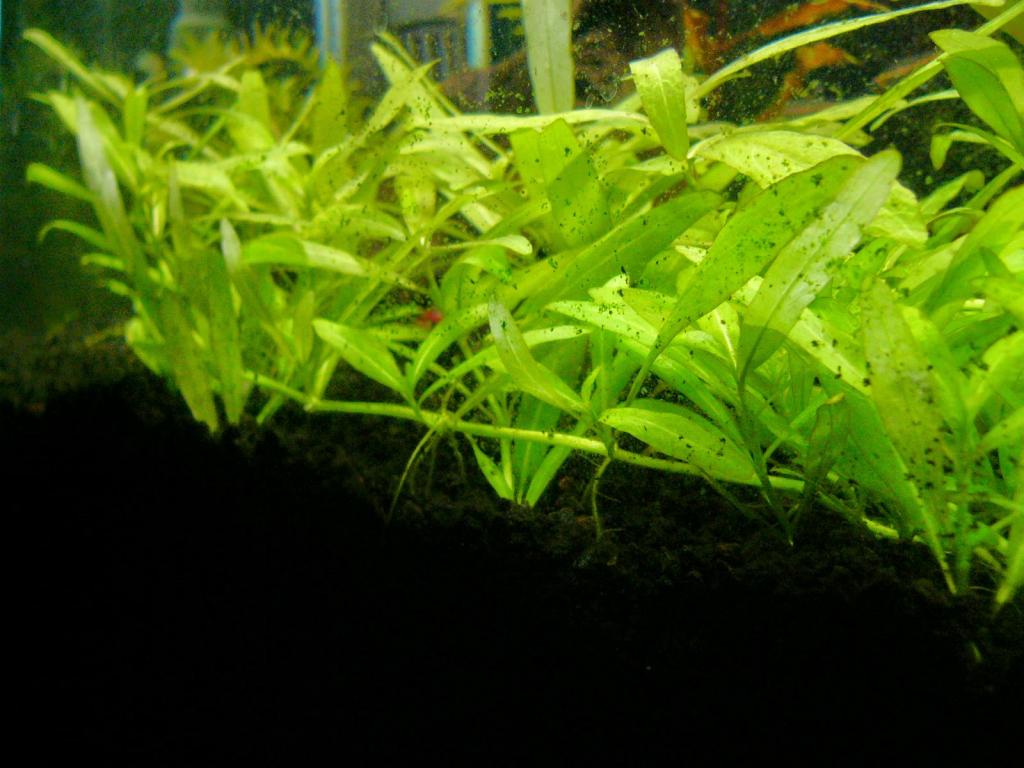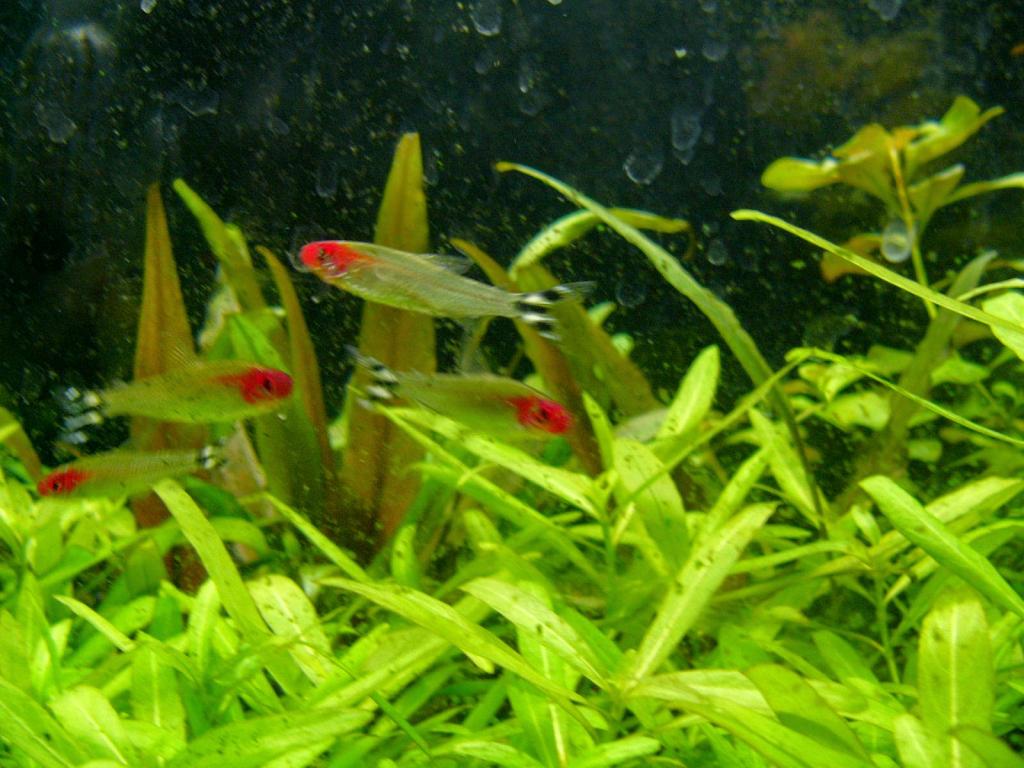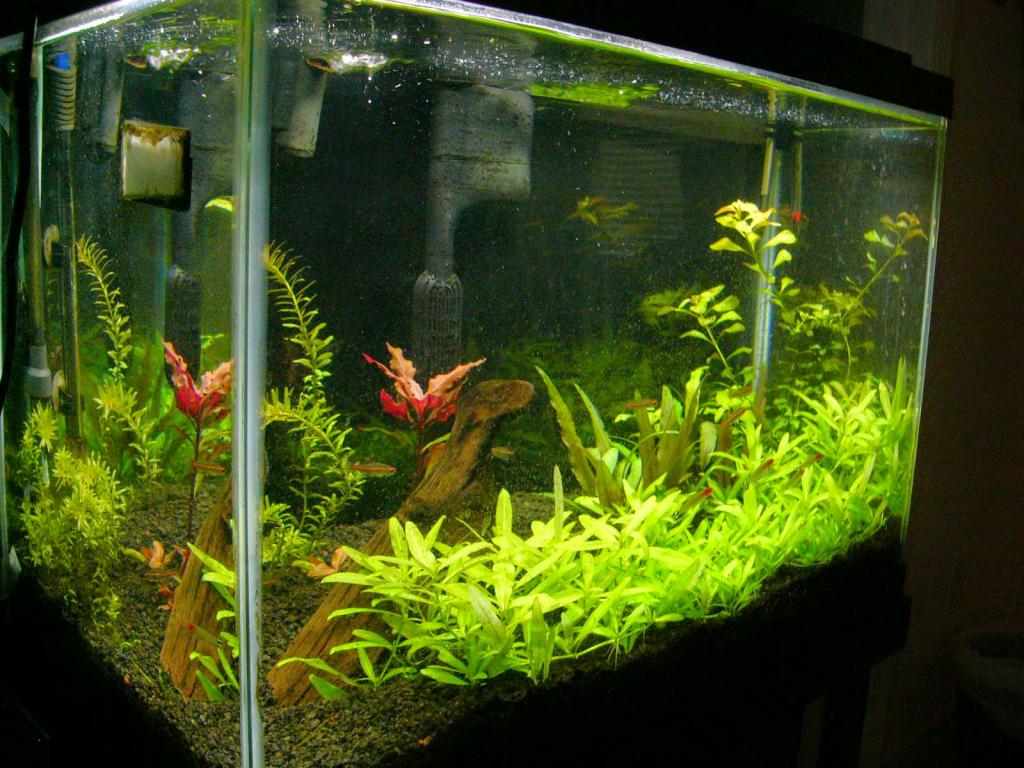Fishperson
Aquarium Advice Addict
I'm not really sure if this is the right forum for this. I have a plant in my 20 gallon tall tank (LWH 24x12x16 inches) with a 24" finnex fugeray planted+ and pressurized co2. I dose modified PPS Pro.
A plant was sold to me as Staurogyne Repens, but now I'm sure it is not. When I had it in my 10 gallon, low light, low maintenance tank with both co2, and no co2, it grew fairly well although kind of slowly. When I moved it to my 20 gallon tank that is more medium light it took off after a couple of days. It now has long, pale green leaves and grows super fast. After I trimmed it it immediately put out shoots/runners growing across the bottom of the tank. Some experienced members of this great forum have determined that it is either Staurogyne Porto Velho or Hygrophila Polysperma. Its leaf shape and vein pattern look right in between the two, I can't really tell from that. Its growth speed is very much like Hygrophila Polysperma; I am trimming and replanting every 2 weeks. The thing that threw me for a loop is the growth pattern. It is crawling across the substrate like ivy, and when it hit the wall of the tank it grew upwards, almost clinging to the wall. Supposedly S Porto Velho does exactly that. Another characteristic that I noticed was that in low light, without co2 it grew slowly, straight up, and then with co2 it still grew slowly, so co2 doesn't seem to be super important. Lastly, it never melted or even adjusted, ever. After I first put it in to my 10 gallon, I can't remember exactly how long it took to start growing, but it never melted back. And once I put it in to my 20 gallon with higher light it shot out longer leaves, sent out runners and side shoots, and grew rapidly almost immediately. So I just don't know which it is.
Here are some pictures:

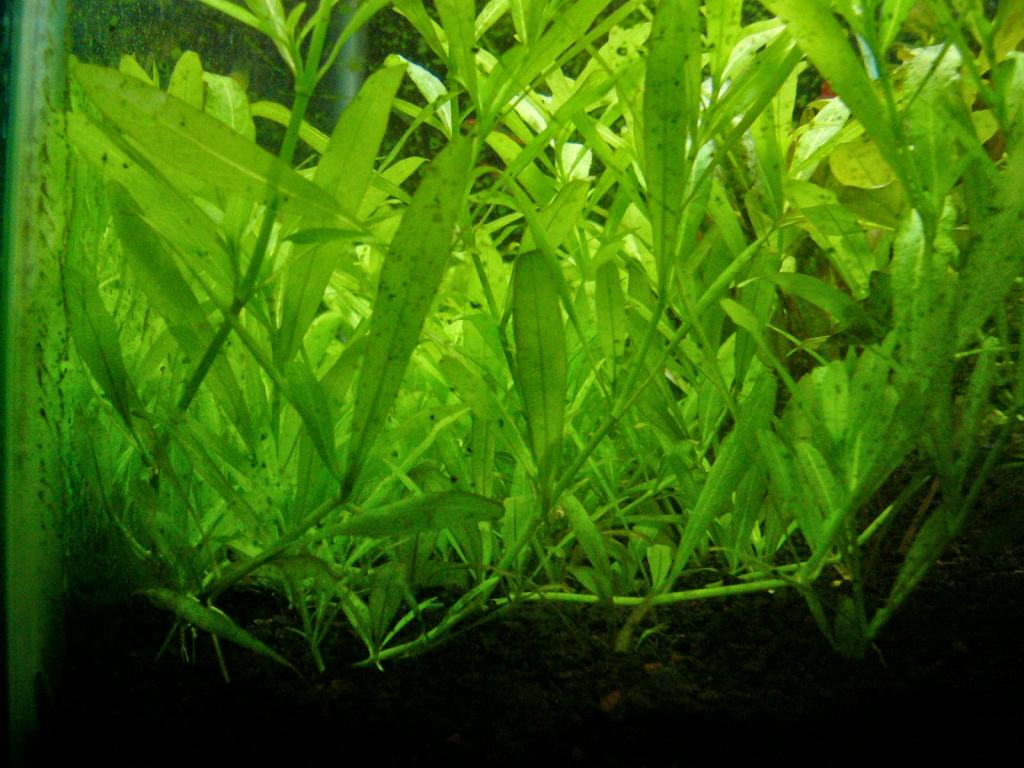
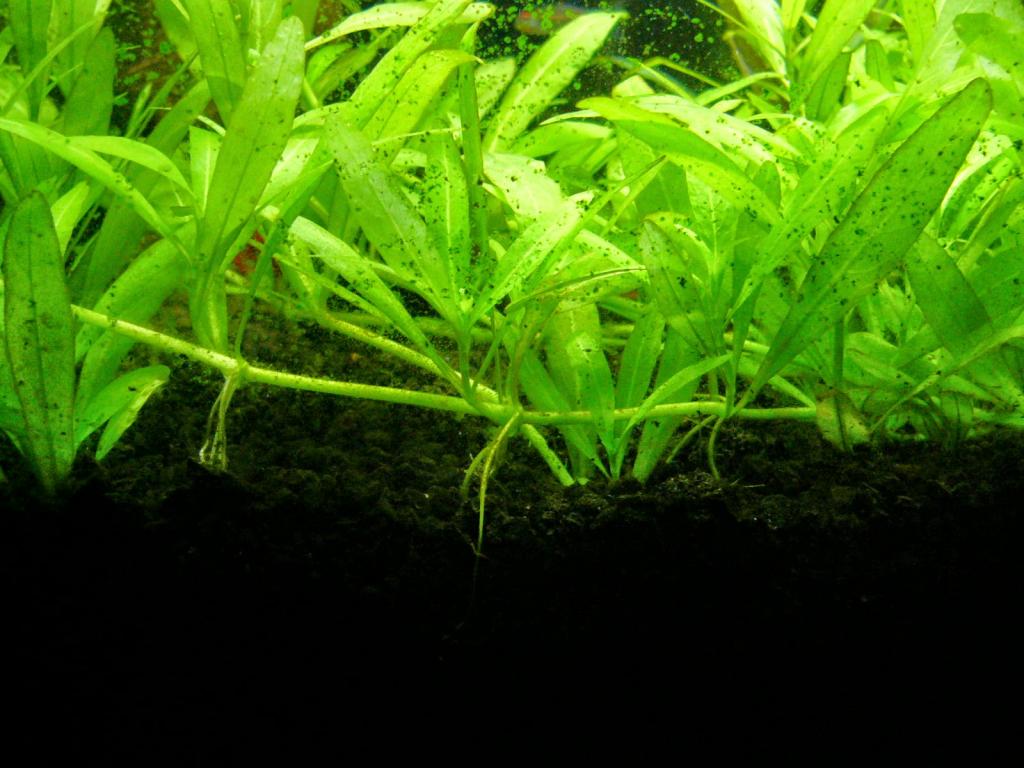
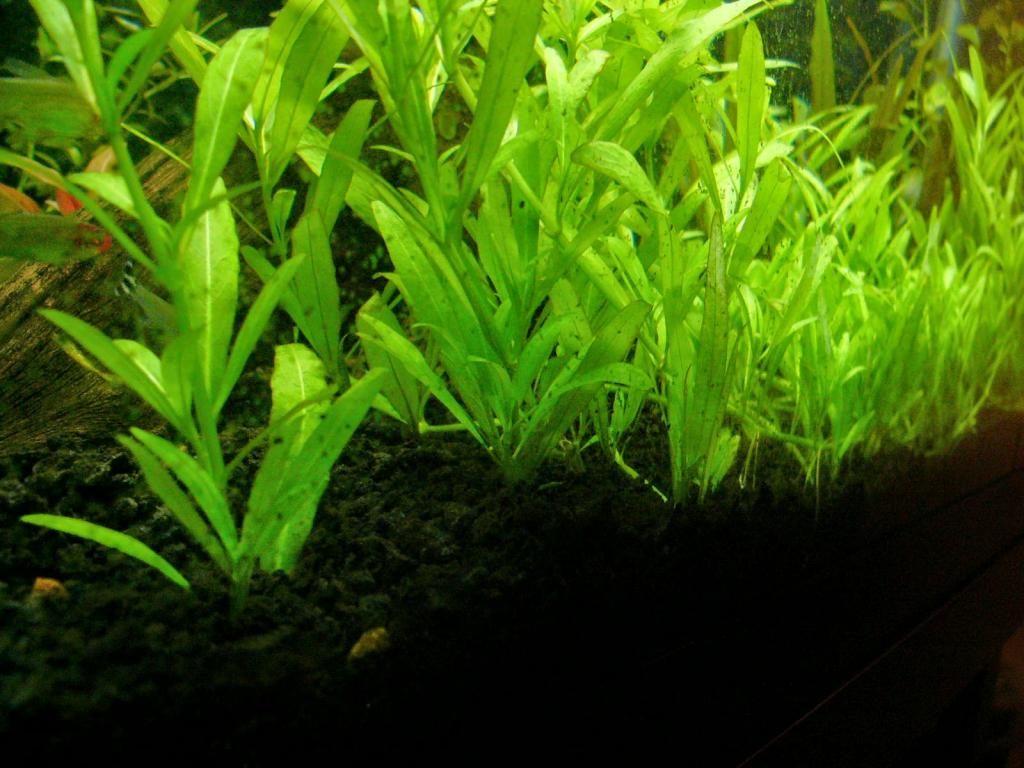
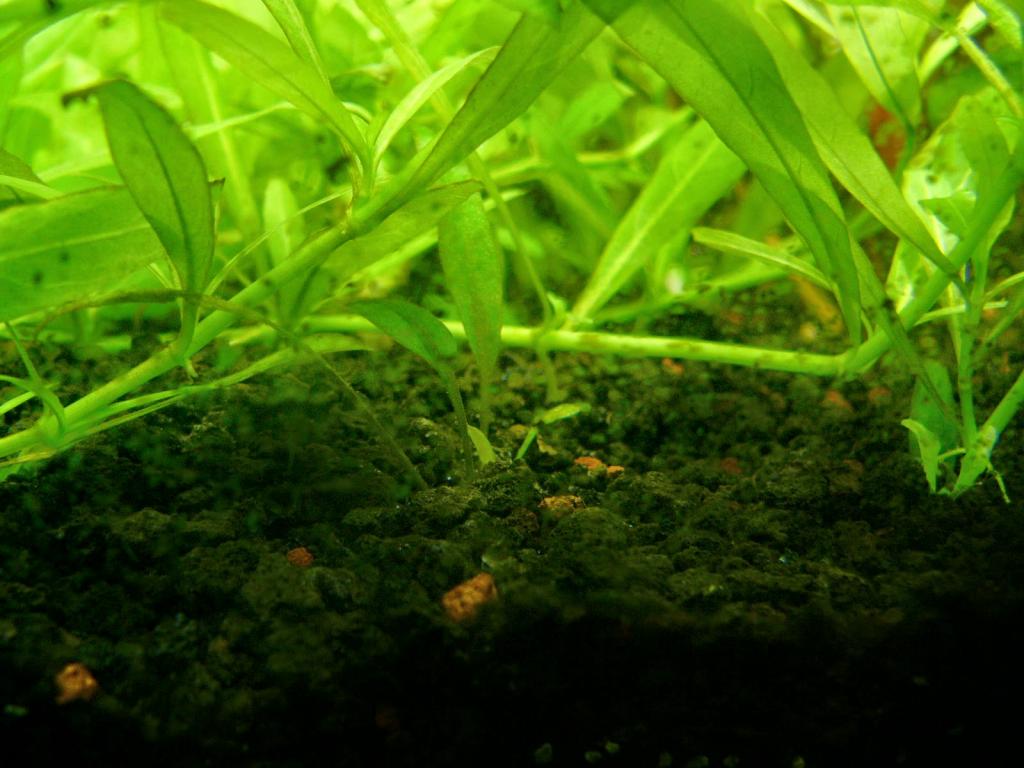
Oh, and yes I know the small plant in the last picture is Cryptocoryne Parva, not the unknown plant.
A plant was sold to me as Staurogyne Repens, but now I'm sure it is not. When I had it in my 10 gallon, low light, low maintenance tank with both co2, and no co2, it grew fairly well although kind of slowly. When I moved it to my 20 gallon tank that is more medium light it took off after a couple of days. It now has long, pale green leaves and grows super fast. After I trimmed it it immediately put out shoots/runners growing across the bottom of the tank. Some experienced members of this great forum have determined that it is either Staurogyne Porto Velho or Hygrophila Polysperma. Its leaf shape and vein pattern look right in between the two, I can't really tell from that. Its growth speed is very much like Hygrophila Polysperma; I am trimming and replanting every 2 weeks. The thing that threw me for a loop is the growth pattern. It is crawling across the substrate like ivy, and when it hit the wall of the tank it grew upwards, almost clinging to the wall. Supposedly S Porto Velho does exactly that. Another characteristic that I noticed was that in low light, without co2 it grew slowly, straight up, and then with co2 it still grew slowly, so co2 doesn't seem to be super important. Lastly, it never melted or even adjusted, ever. After I first put it in to my 10 gallon, I can't remember exactly how long it took to start growing, but it never melted back. And once I put it in to my 20 gallon with higher light it shot out longer leaves, sent out runners and side shoots, and grew rapidly almost immediately. So I just don't know which it is.
Here are some pictures:





Oh, and yes I know the small plant in the last picture is Cryptocoryne Parva, not the unknown plant.

